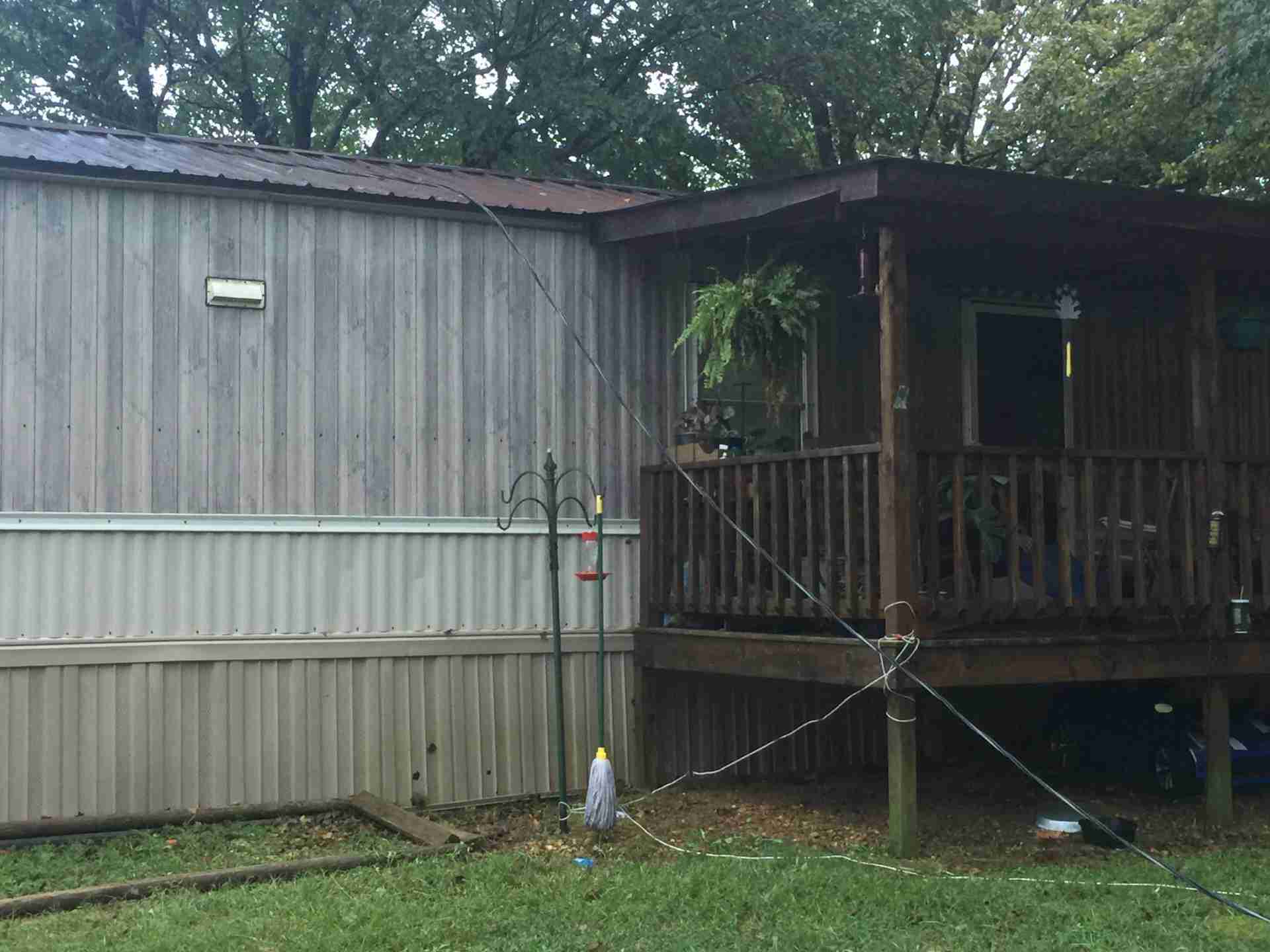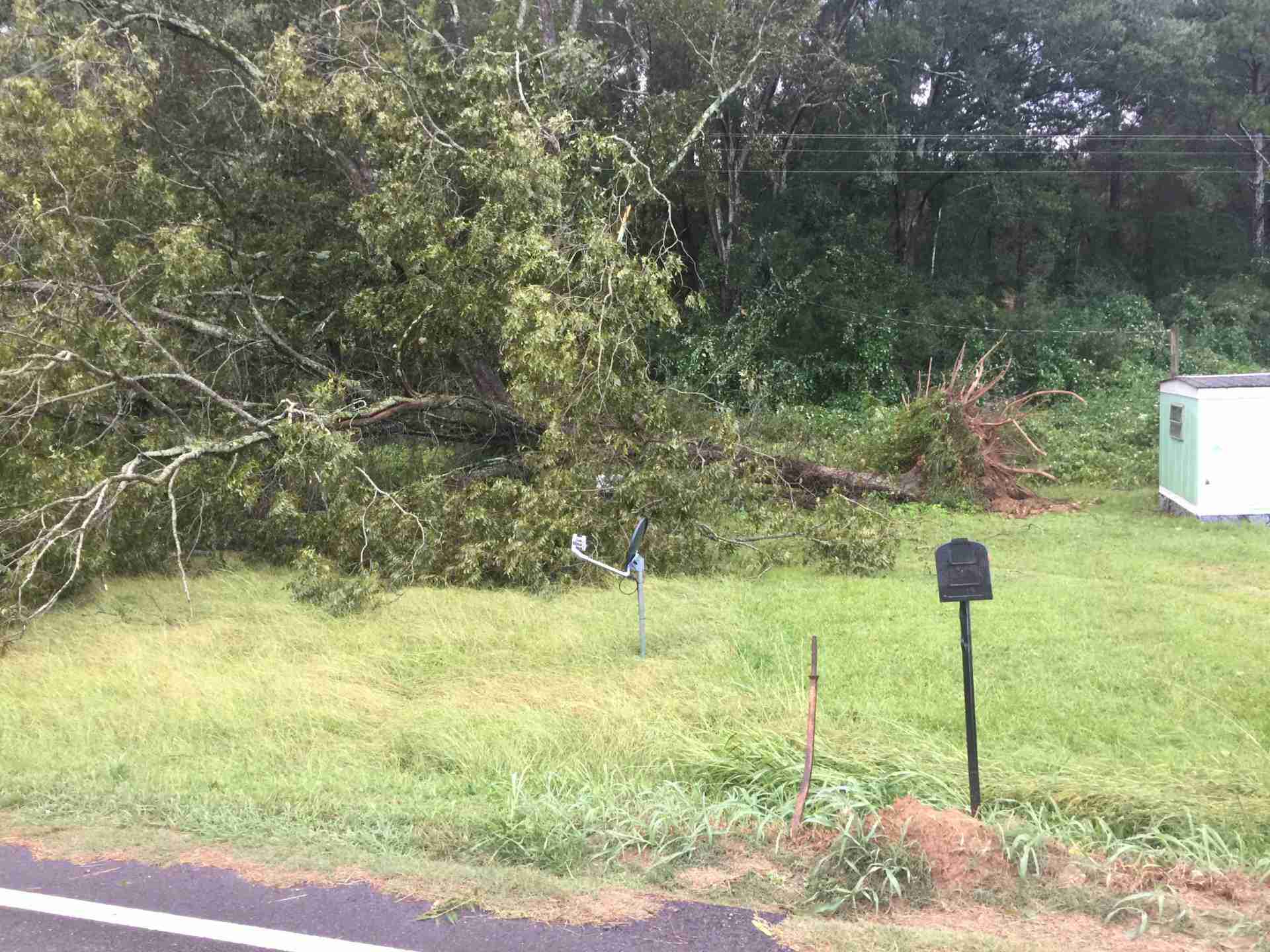 According to Cherokee County EMA Director Shawn Rogers, a Microburst caused downed trees and power lines in the Broomtown area on Saturday evening. The National Weather Service had issued a Significant Weather Advisory for Central Cherokee County and approximately 16 minutes later Cherokee County 9-1-1 received a call reporting that a possible tornado had caused damage on County Road 41 near County Road 97.
According to Cherokee County EMA Director Shawn Rogers, a Microburst caused downed trees and power lines in the Broomtown area on Saturday evening. The National Weather Service had issued a Significant Weather Advisory for Central Cherokee County and approximately 16 minutes later Cherokee County 9-1-1 received a call reporting that a possible tornado had caused damage on County Road 41 near County Road 97.
Director Rogers and EMA Public Information Officer Joey Weaver responded to the scene. After consulting with National Weather Service officials it was determined that there was no tornado or rotation indicated on Doppler radar however weather service officials confirmed that there were 50-60 mph straight line winds associated with a strong, short lived thunderstorm.
The microburst brought down a large tree and snapped a power line causing it to fall across the roadway in addition there was minor damage to a mobile home where underpinning was pulled loose. There were no injuries; all the residents were standing out on the porch of the home when first responders arrived on the scene.
What is a Microburst?
A microburst is a localized column of sinking air (downdraft) within a thunderstorm and is usually less than or equal to 2.5 miles in diameter. Microbursts can cause extensive damage at the surface, and in some instances, can be life-threatening. There are two primary types of microbursts: 1) wet microbursts and 2) dry microbursts. Wet microbursts are accompanied by significant precipitation and are common in the Southeast during the summer months.
What causes a Microburst?
It all starts with the development of a thunderstorm and the water droplets/hailstones being suspended within the updraft. Sometimes an updraft is so strong it suspends large amounts of these droplets and hailstones in the upper portions of the thunderstorm. There are many factors that can lead to evaporational cooling (sinking air) and therefore weakening of the updraft. Once this occurs, it is no longer capable of holding the large core of rain/hail up in the thunderstorm. As a result, the core plummets to the ground. As it hits the ground it spreads out in all directions. The location in which the microburst first hits the ground experiences the highest winds and greatest damage.
Microburst Damage
Wind speeds in microbursts can reach up to 100 mph, or even higher, which is equivalent to an EF-1 tornado! Winds this high can cause major damage to homes and other structures and level hundreds of trees. It is very important that you take Severe Thunderstorm Warnings just as seriously as Tornado Warnings!
The image below shows just how much damage can be caused by microburst winds. As you can see, this manufactured home was completely destroyed.










